How to use Python basics Spyder
What is Spyder
Spyder is an integrated development environment (IDE) for scientific computing using the Python programming language.
It combines the advanced editing, analysis, and debugging functions of comprehensive development tools with the visualization functions of data exploration, interactive execution, in-depth inspection, and scientific packages, bringing great convenience to users.
Open Spyder
In the start menu, find Anaconda3-Spyder and click to enter; you can also send "Spyder" to the desktop shortcut, and then click the "Spyder" icon on the desktop Enter
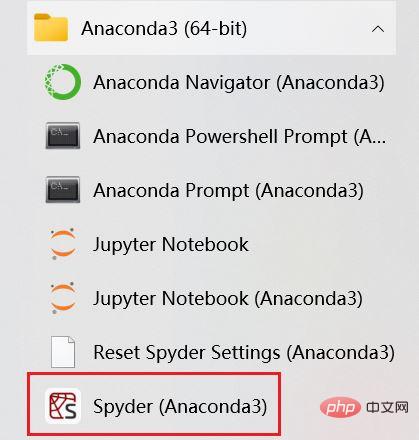
Modify the display theme
After entering Spyder, the page is as shown in the picture
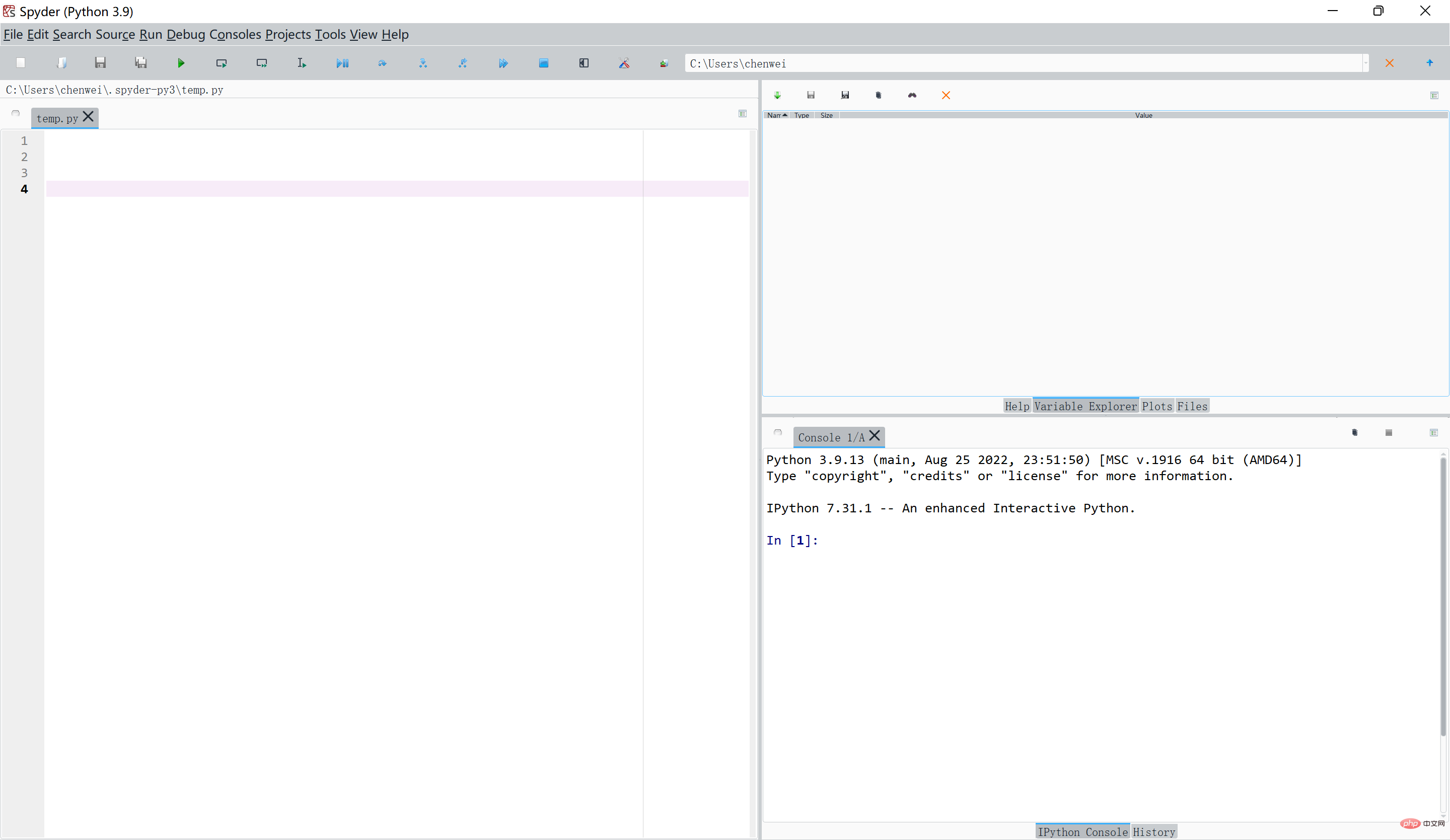
Although the program Members generally prefer black backgrounds (I don’t know why, maybe it looks more classy), but we can also choose the background we like.
We can click Tools-Preference-Appearance, select the display theme we like, click on different themes and then click the preview button on the right to see the renderings.

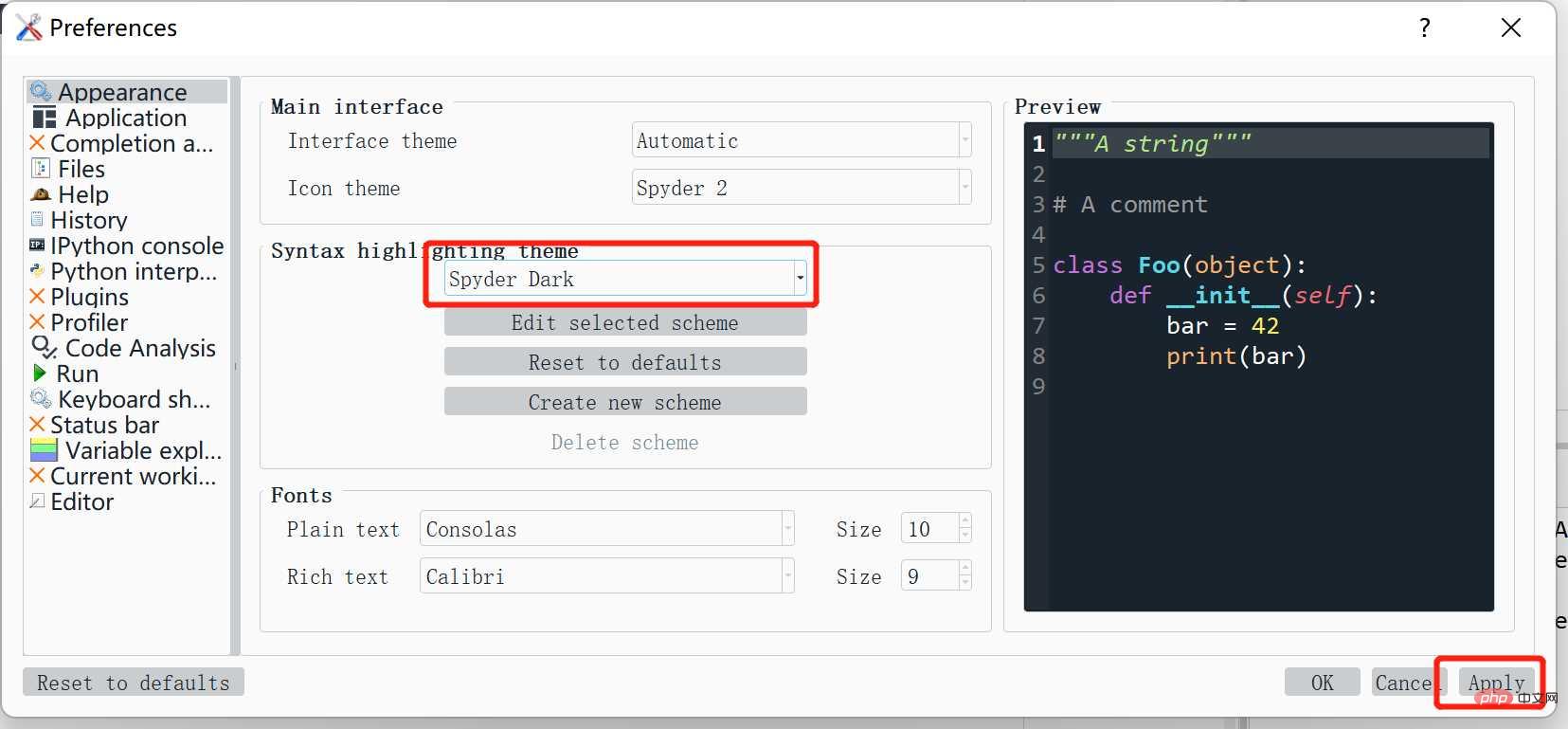
After selecting the display theme, click Apply. The system prompts that Spyder needs to be restarted. Click Yes.
Modify language
We can click Tools-Preference-Application-Advanced settings, select "Simplified Chinese" and click "Apply" to switch to Chinese.

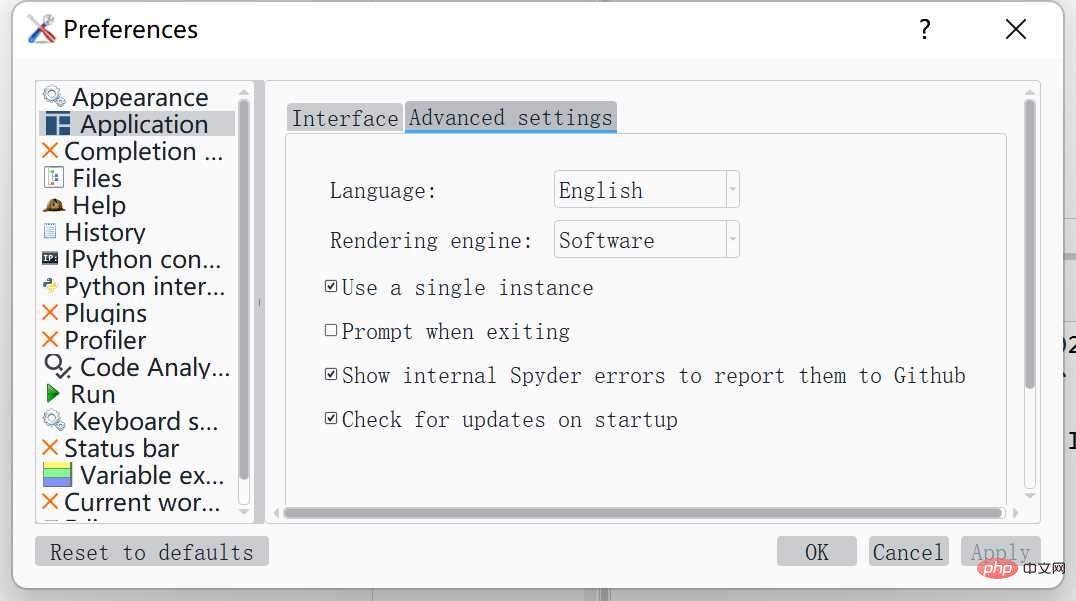
The core building blocks of Spyder
What we use most often is thecode editing area and variable browsing These three windows are the server and IPython console.
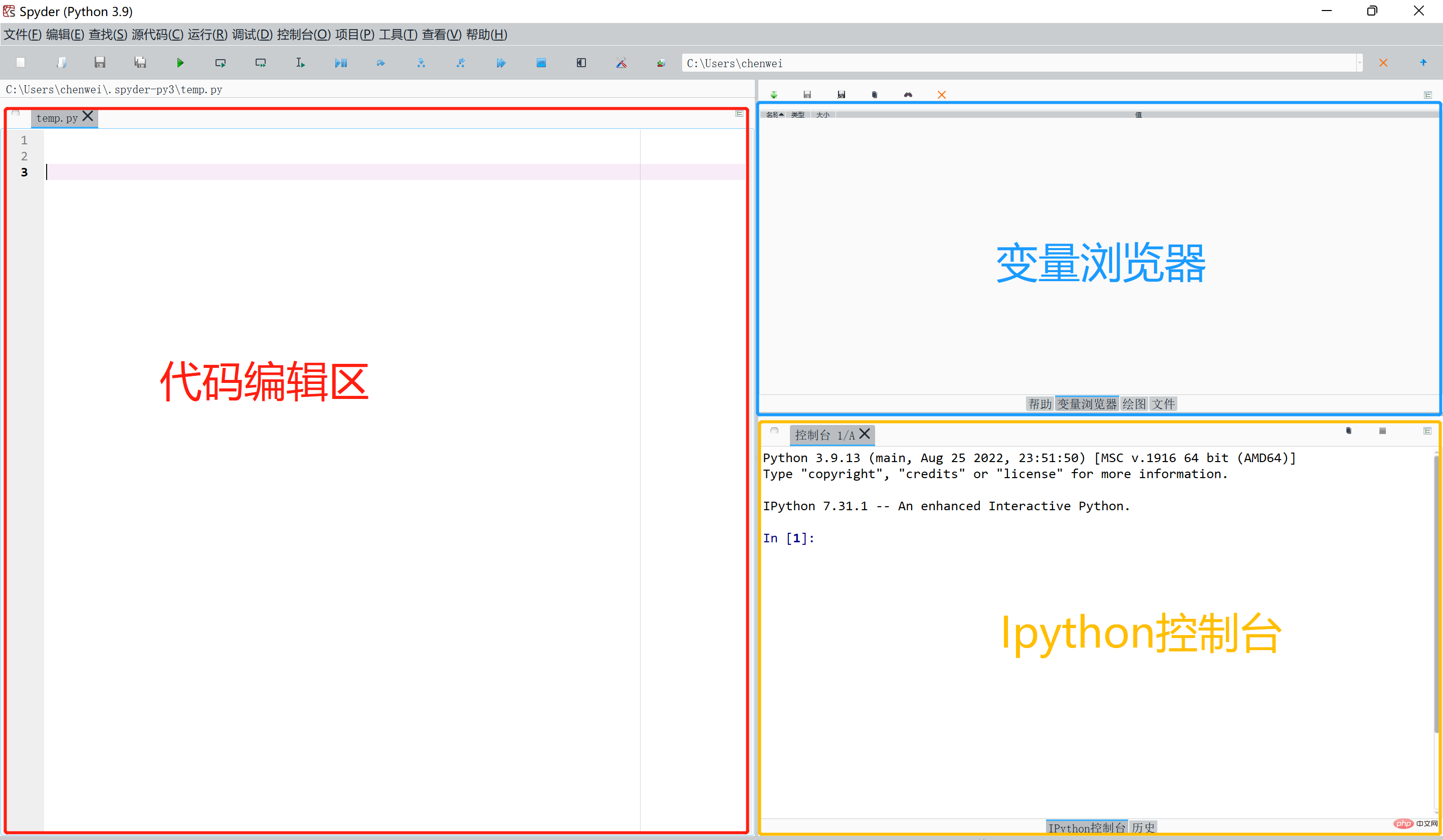
Code editing area: By default, it is located on the left side of the Spyder interface. It is mainly used for writing code files.
Variable Browser: By default, it is located in the upper right corner of the Spyder interface. As long as it is a structural variable in Python memory, such as a data frame, list, dictionary, etc., it can be displayed here, each line Displays information about a variable, including variable name, variable type, variable length, and variable value. Double-click the corresponding variable row to view all the data in the variable by popping up a new window.
IPython console: Located in the lower right corner of the Spyder interface by default, it is the core execution unit of Spyder and performs file-based programming and interactive programming. The most important function is to interact with users, who can quickly verify whether the code running results are as expected.
Basic operations in the code editing area
File operations
Common file operations mainly include new, open, and save
(1 ) New
Click "File" - "New File" in the menu bar, and a new file named "Unnamed 0.py" is created. We write print('Hello, world'), then we have compiled our first program.
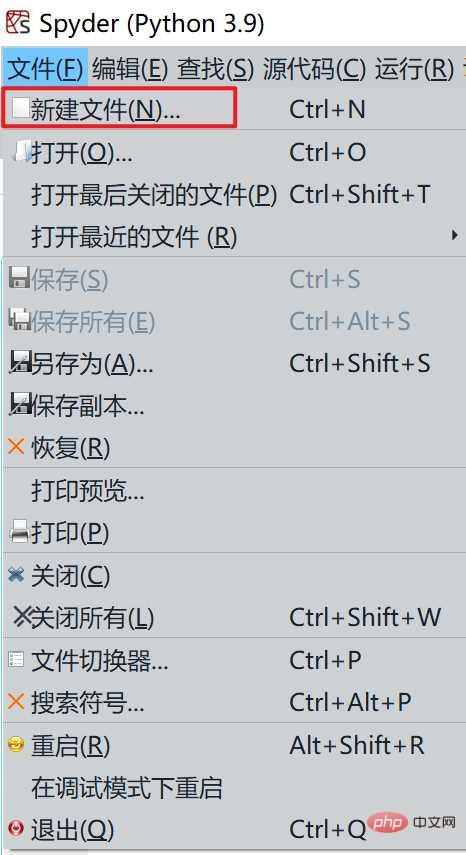
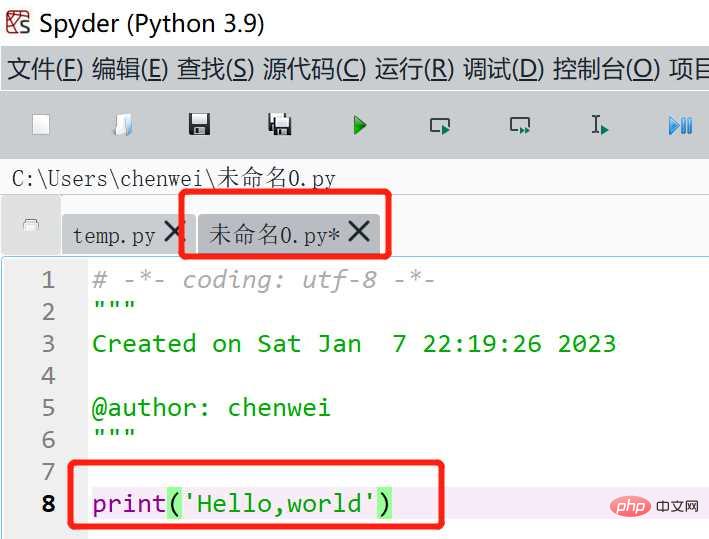
(2) Save
After the program is compiled, we can click "File"-"Save" in the menu bar ", you can save the file
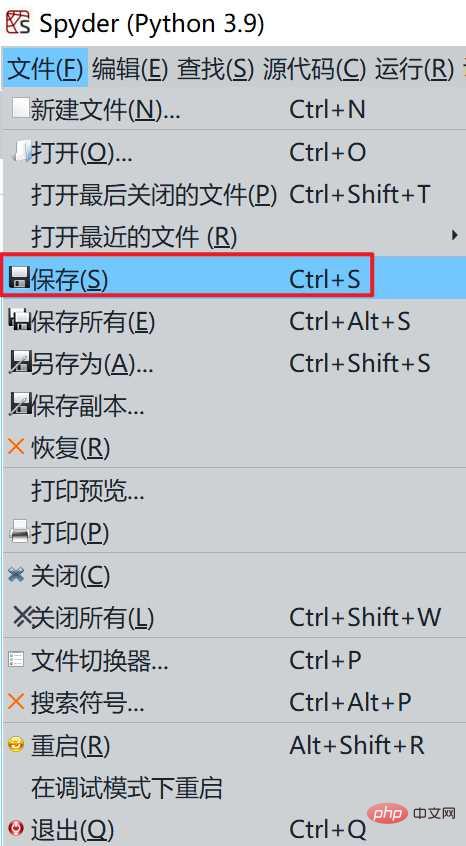
# You can choose to save the folder and rename the file, for example, name it "First python file".
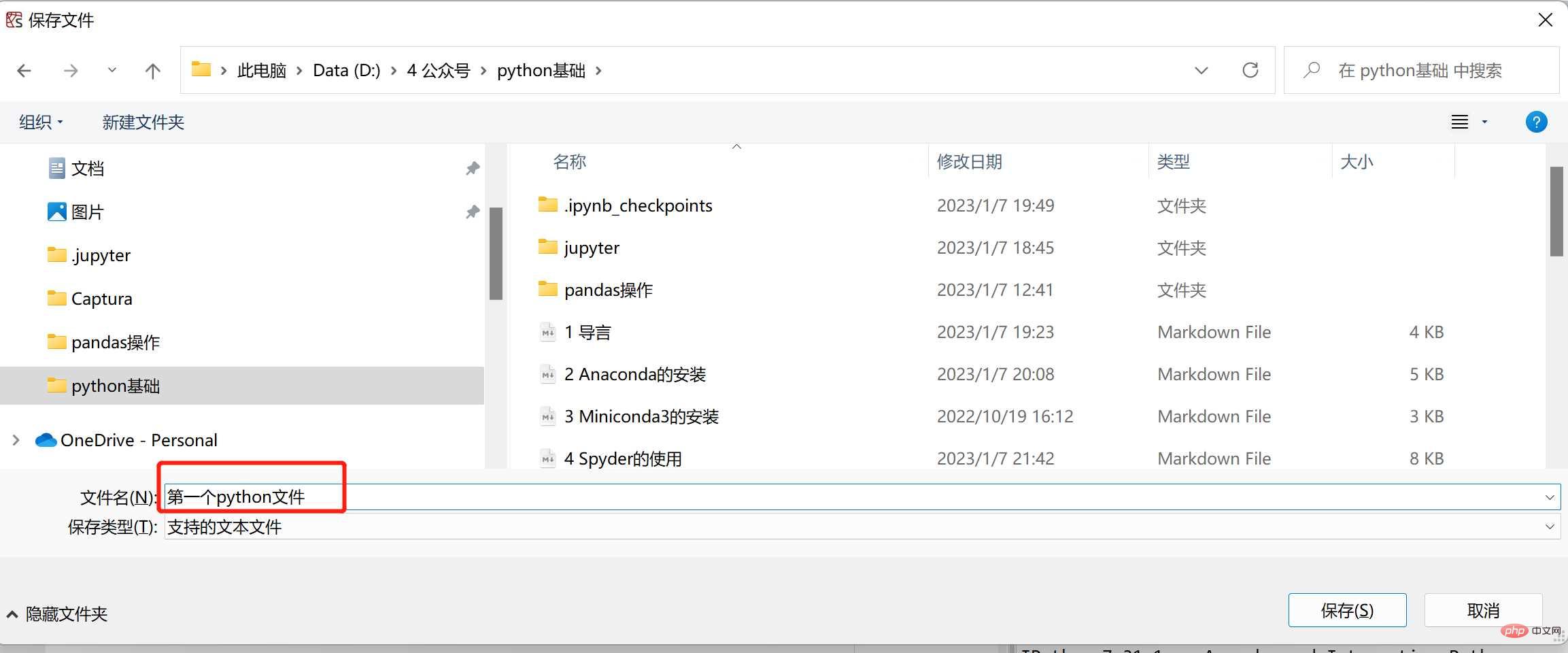
(3) Open
We click "File"-"Open" in the menu bar to open the file
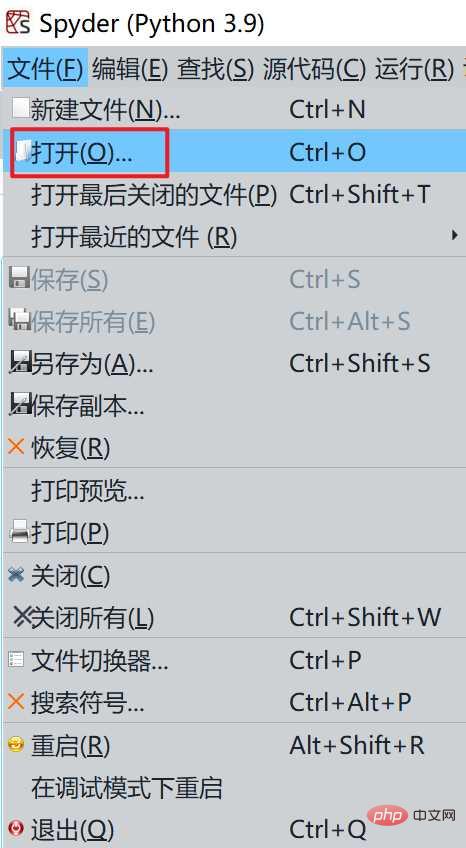
Run operation
After we edit the code in the code editing area, click the shortcut key of "Run File" to run it.
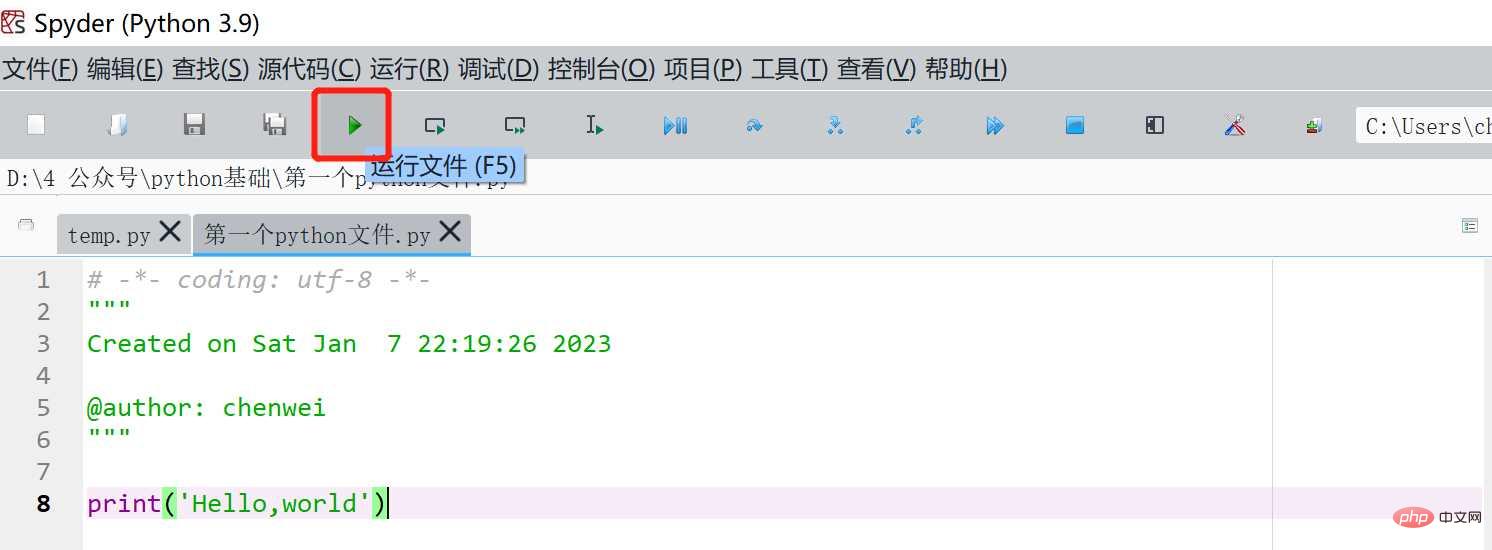
Basic operations of IPython console
Perform file-based programming
After we edit the code in the code editing area, click "Run File " shortcut key to run, and the running results are displayed in the Ipython console.

Execute interactive programming
We can also edit the code directly in the Ipython console. After editing is completed, enter the "Enter" key to run.
The above is the detailed content of How to use Python basics Spyder. For more information, please follow other related articles on the PHP Chinese website!

Hot AI Tools

Undress AI Tool
Undress images for free

Undresser.AI Undress
AI-powered app for creating realistic nude photos

AI Clothes Remover
Online AI tool for removing clothes from photos.

Clothoff.io
AI clothes remover

Video Face Swap
Swap faces in any video effortlessly with our completely free AI face swap tool!

Hot Article

Hot Tools

Notepad++7.3.1
Easy-to-use and free code editor

SublimeText3 Chinese version
Chinese version, very easy to use

Zend Studio 13.0.1
Powerful PHP integrated development environment

Dreamweaver CS6
Visual web development tools

SublimeText3 Mac version
God-level code editing software (SublimeText3)

Hot Topics
 How to handle API authentication in Python
Jul 13, 2025 am 02:22 AM
How to handle API authentication in Python
Jul 13, 2025 am 02:22 AM
The key to dealing with API authentication is to understand and use the authentication method correctly. 1. APIKey is the simplest authentication method, usually placed in the request header or URL parameters; 2. BasicAuth uses username and password for Base64 encoding transmission, which is suitable for internal systems; 3. OAuth2 needs to obtain the token first through client_id and client_secret, and then bring the BearerToken in the request header; 4. In order to deal with the token expiration, the token management class can be encapsulated and automatically refreshed the token; in short, selecting the appropriate method according to the document and safely storing the key information is the key.
 How to parse large JSON files in Python?
Jul 13, 2025 am 01:46 AM
How to parse large JSON files in Python?
Jul 13, 2025 am 01:46 AM
How to efficiently handle large JSON files in Python? 1. Use the ijson library to stream and avoid memory overflow through item-by-item parsing; 2. If it is in JSONLines format, you can read it line by line and process it with json.loads(); 3. Or split the large file into small pieces and then process it separately. These methods effectively solve the memory limitation problem and are suitable for different scenarios.
 Python for loop over a tuple
Jul 13, 2025 am 02:55 AM
Python for loop over a tuple
Jul 13, 2025 am 02:55 AM
In Python, the method of traversing tuples with for loops includes directly iterating over elements, getting indexes and elements at the same time, and processing nested tuples. 1. Use the for loop directly to access each element in sequence without managing the index; 2. Use enumerate() to get the index and value at the same time. The default index is 0, and the start parameter can also be specified; 3. Nested tuples can be unpacked in the loop, but it is necessary to ensure that the subtuple structure is consistent, otherwise an unpacking error will be raised; in addition, the tuple is immutable and the content cannot be modified in the loop. Unwanted values can be ignored by \_. It is recommended to check whether the tuple is empty before traversing to avoid errors.
 How to make asynchronous API calls in Python
Jul 13, 2025 am 02:01 AM
How to make asynchronous API calls in Python
Jul 13, 2025 am 02:01 AM
Python implements asynchronous API calls with async/await with aiohttp. Use async to define coroutine functions and execute them through asyncio.run driver, for example: asyncdeffetch_data(): awaitasyncio.sleep(1); initiate asynchronous HTTP requests through aiohttp, and use asyncwith to create ClientSession and await response result; use asyncio.gather to package the task list; precautions include: avoiding blocking operations, not mixing synchronization code, and Jupyter needs to handle event loops specially. Master eventl
 What is a pure function in Python
Jul 14, 2025 am 12:18 AM
What is a pure function in Python
Jul 14, 2025 am 12:18 AM
Pure functions in Python refer to functions that always return the same output with no side effects given the same input. Its characteristics include: 1. Determinism, that is, the same input always produces the same output; 2. No side effects, that is, no external variables, no input data, and no interaction with the outside world. For example, defadd(a,b):returna b is a pure function because no matter how many times add(2,3) is called, it always returns 5 without changing other content in the program. In contrast, functions that modify global variables or change input parameters are non-pure functions. The advantages of pure functions are: easier to test, more suitable for concurrent execution, cache results to improve performance, and can be well matched with functional programming tools such as map() and filter().
 Can a Python class have multiple constructors?
Jul 15, 2025 am 02:54 AM
Can a Python class have multiple constructors?
Jul 15, 2025 am 02:54 AM
Yes,aPythonclasscanhavemultipleconstructorsthroughalternativetechniques.1.Usedefaultargumentsinthe__init__methodtoallowflexibleinitializationwithvaryingnumbersofparameters.2.Defineclassmethodsasalternativeconstructorsforclearerandscalableobjectcreati
 what is if else in python
Jul 13, 2025 am 02:48 AM
what is if else in python
Jul 13, 2025 am 02:48 AM
ifelse is the infrastructure used in Python for conditional judgment, and different code blocks are executed through the authenticity of the condition. It supports the use of elif to add branches when multi-condition judgment, and indentation is the syntax key; if num=15, the program outputs "this number is greater than 10"; if the assignment logic is required, ternary operators such as status="adult"ifage>=18else"minor" can be used. 1. Ifelse selects the execution path according to the true or false conditions; 2. Elif can add multiple condition branches; 3. Indentation determines the code's ownership, errors will lead to exceptions; 4. The ternary operator is suitable for simple assignment scenarios.
 How to prevent a method from being overridden in Python?
Jul 13, 2025 am 02:56 AM
How to prevent a method from being overridden in Python?
Jul 13, 2025 am 02:56 AM
In Python, although there is no built-in final keyword, it can simulate unsurpassable methods through name rewriting, runtime exceptions, decorators, etc. 1. Use double underscore prefix to trigger name rewriting, making it difficult for subclasses to overwrite methods; 2. judge the caller type in the method and throw an exception to prevent subclass redefinition; 3. Use a custom decorator to mark the method as final, and check it in combination with metaclass or class decorator; 4. The behavior can be encapsulated as property attributes to reduce the possibility of being modified. These methods provide varying degrees of protection, but none of them completely restrict the coverage behavior.







